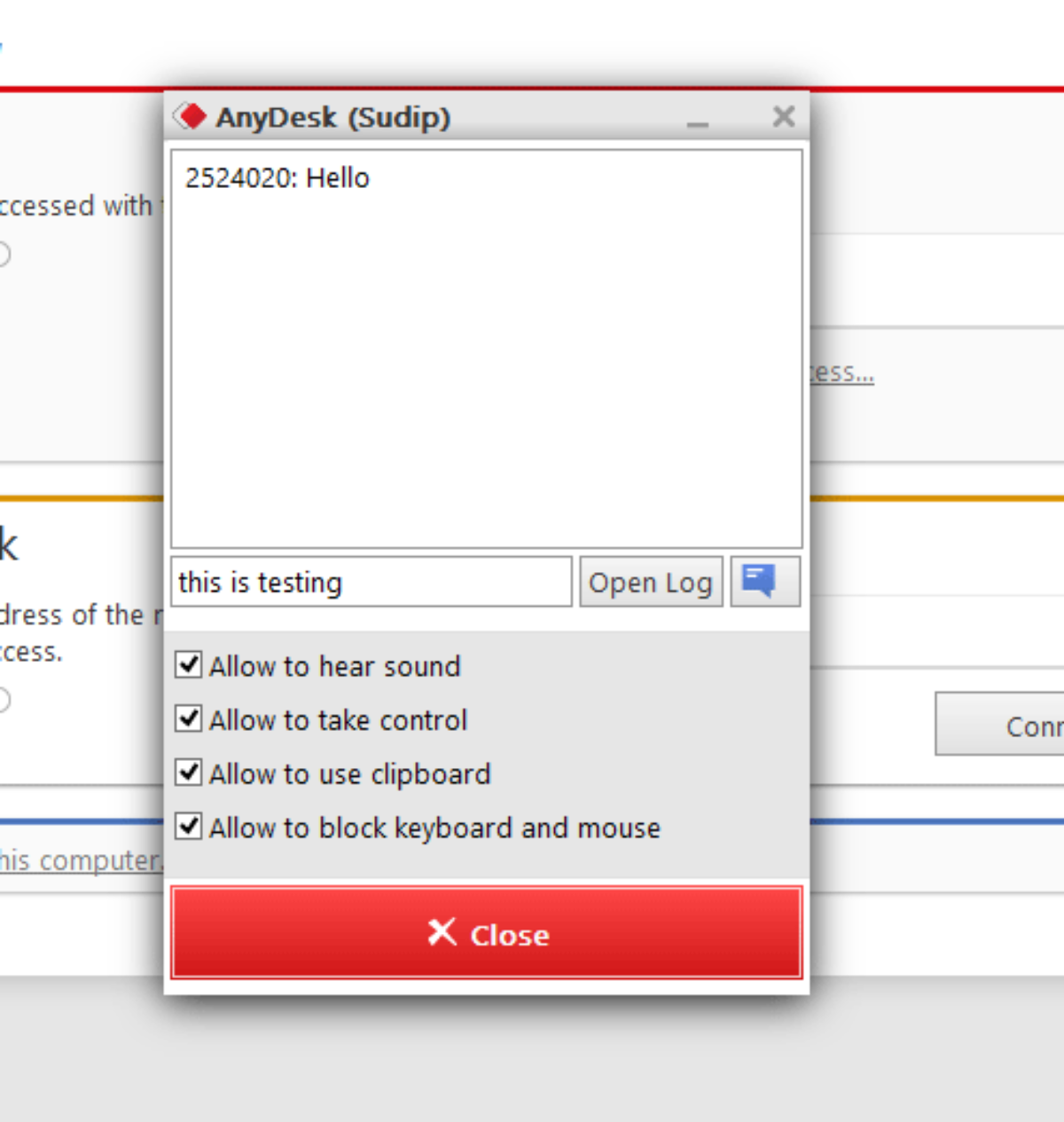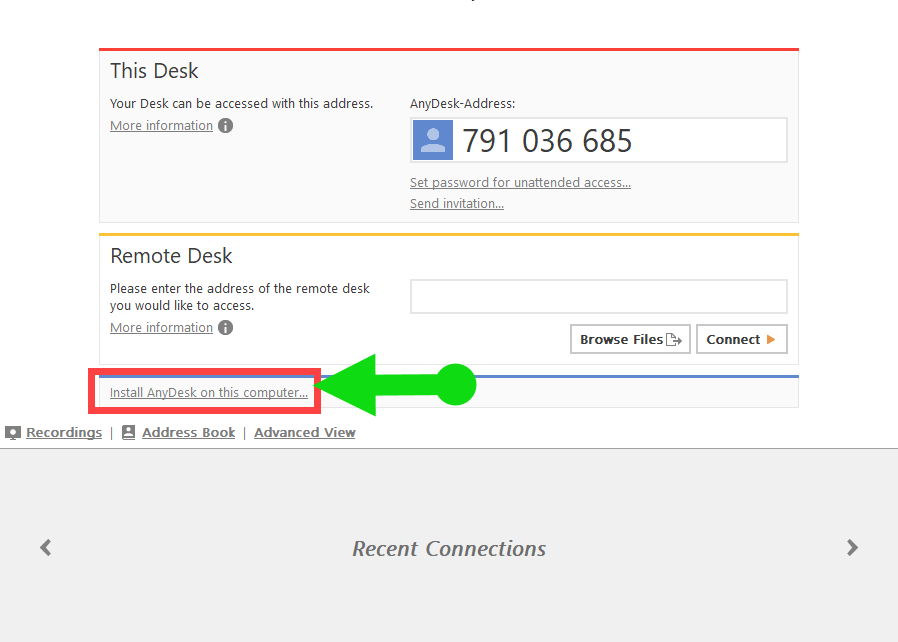Make sure AnyDesk is running on both the remote and guest devices. On the remote device, look for the address listed in the pane for This Desk. On the guest PC, enter that address in the pane for. AnyDesk is a free Remote Desktop Application for Windows, Mac, Linux, and mobile that does not require creating an account to be used. According to the developers, the program has a secure connection with encryption and a proprietary codec that ensures seamless transmission. I downloaded and installed anydesk (free licence) in Ubuntu 18.04: sudo dpkg -i anydesk2.9.6-1amd64.deb But it does not allow me to change the 'alias' (change the number to a custom alias, like e.g. Pc1@MyCompany or machine@ad) (see fingerprint) According to anydesk you have to modify this file: Linux: /.anydesk/service.conf.
Whereveryou are in the world, you can access and remotely control your computer withAnyDesk. And when we say anywhere, we mean it!
Youjust left the office and are looking forward to a quiet evening, which is whyyou left your laptop at work. You’re already on the train when you get amessage from your co-worker who needs your help and asks you to connect totheir computer with AnyDesk. Now??!!
Should you get off the train, go back to the office, and fetch your laptop?
Not if you have a smartphone. Just access your co-worker’s computer from the train.
All you need to do is make sure both devices have downloaded AnyDesk.
Once you open the app, you’ll see your device already has an AnyDesk ID assigned to it. Below, enter the ID or Alias of your co-worker’s PC. Tap on the red arrow and get started!
Your phone is now waiting for the remote device to accept the connection, which means the usual request window pops up on your co-worker’s PC and they can choose what permissions they want to allow your phone to have.
As soon as they accept, you’re connected.
In the mobile app, all the settings are embedded in a pie menu that opens up when you tap and hold the gray AnyDesk button. To find out the names and uses of each section, just hold whatever section you want to find out more about and the text will hover on your screen.
Obviously, you don’t need a mouse to control the remote device via the Android app. Your phone display is now your touchpad.

Iphone smart cleaner. In touchpad mode, swiping one finger moves the mouse. A single tap is a left mouse click. So far, so good. Mac os x for ibook g3.
Scrolling down works by swiping with three fingers. A right mouse click can be done by tapping and holding. Tap with three fingers for a middle click. Double tapping and holding the second tap is like holding the left mouse button and moving the mouse. You can do things like drag and drop or select an area with this. By the way, you can actually use drag and drop while simultaneously zooming!
Now, let’s take a closer look at the pie menu.
Anydesk Accept Connections Automatically
On top, find thesettings that are usually optimally preset. Some of the things you can changeare whether or not you want your clipboard to be synchronized, how you want theremote screen to be displayed, and whether or not you want to transmit audio.
Go back to the pie menu and choose the next section, selecting the input type. Apart from displaying a keyboard and special buttons, you can change how the mouse moves. The standard setting – and the fastest way to control the mouse – is called touch input. Wherever you tap on the screen, the mouse moves there. If you are used to operating a notebook, you might want to try the other option called touchpad input, where your device behaves like – you guessed it – the touchpad on your laptop. That means simply tapping on the screen doesn’t move your mouse there, you need to move it by swiping. Try it out and find out which option is more intuitive for you.
You can switch between the screens underneath the input types in the pie menu, as well as switch to full-screen mode there as well.
Lastly, there’s the actions menu where you can take a screenshot, upload and download files, request more permissions, and bring up the program manager (ctrl+alt+del). The red button on the bottom closes the session.
You don’t have to close the session if you need your phone for something else at any time during the session. Simply drag the top of the screen to the lower right. Now you can still see your session in a small separate window while answering e-mails.

Please note the session continues when you go back to the home window without pressing the red button! This is so you can change privacy or other settings during the session – which you can find in the top left corner or by swiping from the left of the screen. There’s also a tutorial that guides you through the AnyDesk app. For more information on settings, click here. (https://support.anydesk.com/Android_App#Settings_and_Menu_Tab)
If you’re done helping your co-worker and you’ve closed the connection, you’ll see the remote device you recently connected to is saved in your speed dial. Next time your co-worker needs help, you don’t need to ask them for their ID and alias again. Or, to connect even faster, simply drop your colleague’s icon in the address book to the home screen of your Android device by long-pressing the AnyDesk icon. That way the next time you tap on the icon it directly establishes a connection to your co-worker.
Now you can finally lean back and enjoy the rest of your train ride. Don’t stress about any files you forgot on your office computer because you can access them at any time using AnyDesk.
Both clients can set Permissions prior to or during a session. The incoming client is being viewed and controlled.Next to the session permissions available in the accept window on the incoming client and the session settings of the Main window of the outgoing client during session,standard permissions are set in the security tab of the settings for each client. See also: Session Recording and Session Settings.
Accept Window
When a session to a device is requested, an accept window appears displaying available permissions to be granted or denied.After selecting the desired permissions to be granted, the session is started by accepting.
Session permissions available in the accept window:
- Mouse & Keyboard
- Clipboard Sync
- File Manager
- Sound
- TCP-Forwarding
- Lock Screen after the session ends
- Session Recording
- Whiteboard
Accept Anydesk App
Security Settings

Anydesk Accept Screen
The security settings distingish after session type.
Next to the standard permissions, you may choose to overwrite permissions for unattended access
to have its own set of settings.

- hear my output
- control my computer's keyboard and mouse
- access my computer's clipboard
- lock my computer's keyboard and mouse
- restart my computer
- use the file manager
- lock desktop on session end
- request system information
- print out my documents on their printer.
- draw on computers' screen.
- create TCP-tunnels.
- enable privacy.
- show a colored mouse pointer when physical input is forbidden

